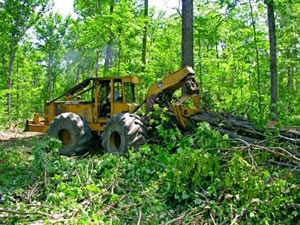
Decreases in the availability and security of petroleum supplies, coupled with global increases in demands, are driving energy, transportation, food, and fiber prices higher. Dependence on petroleum threatens U.S. energy, economic, and environmental security. A nation with insecure or inadequate energy resources is at risk of being unable to feed and house its people, care for its environment, and sustain its economy. Biomass is the single renewable resource that has the potential to supply a significant portion of U.S. liquid transportation fuels, chemicals, and substitutes for fossil fuel- intensive products. The Energy Independence and Security Act of 2007 (Public Law 110-140) mandates that by 2022, the United States will replace 36 billion gallons/year (bg/yr) of transportation fuels with biofuels, with at least 16 bg/yr coming from cellulosic feedstocks.

Wood is an abundant, sustainable, homegrown cellulosic resource that can significantly contribute to meeting 30 percent of U.S. petroleum consumption from biomass sources by 2030 and help create a more stable energy future, improve environmental quality, and increase economic opportunities. Our Nation’s forests comprise a sustainable, strategic asset in achieving and enhancing U.S. energy security, economic opportunity, environmental quality, and global competitiveness. Woody biomass is a sustainable alternative feedstock for producing fuels and substitutes for fossil fuel-intensive products.
The creation of a sustainable bioindustry producing biofuels and bioproducts on a significant scale is critically dependent on having a large, sustainable supply of biomass with appropriate characteristics at a reasonable cost; cost-effective and efficient processes for converting wood to biofuels, chemicals, and other high-value products; and useful tools for decisionmaking and policy analysis. The Bioenergy and Biobased Products Strategic Direction 2009-2014 is focused on delivering value in these three areas:
- Sustainable & Economical Biomass Management & Production
- Competitive Biofuel Conversion & Bioproduct Technologies
- Decision Making Information & Tools
Forest Service R&D has a long history of providing results in the area of bioenergy and biobased products. Since the 1970’s, significant accomplishments have been made in harvesting, genetics, silviculture, and conversion processes related to energy.
Spotlights
Bioenergy Production
Southern Research Station scientists are studying the viability of producing energy from woody biomass gasification-combustion-electricity generation unit to produce up to 25 kilowatts.




